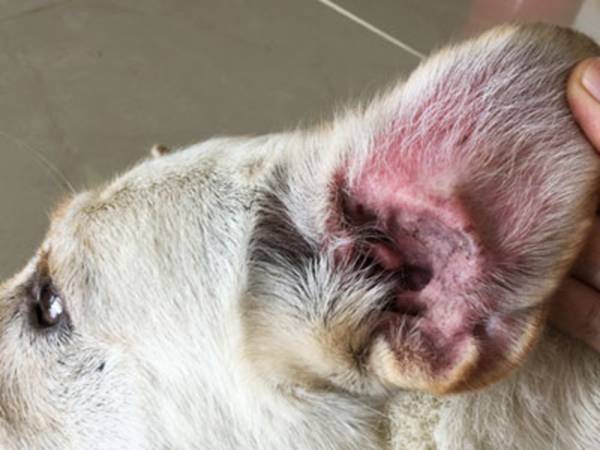Some people believe breeding a dog is something that’s easy. It’s nature, right? However, there’s a right way and a wrong way to go about breeding a dog.
Connect with a verified veterinarian in minutes. Licensed vets are available 24/7 to answer your questions. No need to worry about your furry family member.
Are you thinking about breeding your male dog? Then there are some things you’ll need to know about! In this article, we’ve put some information together to help provide the information you need to know about this topic! Let’s get started.
Responsible Breeding Practices
As a breeder or a pet parent, it’s essential to follow responsible breeding practices. These are guidelines that ensure the welfare of your dog, the female, as well as the puppies.
1). Prepare for Breeding a Litter of Puppies
Be sure to know what to expect before breeding your dog. This means being knowledgeable about the breeding process, as well as raising puppies, and more.
2). Breed to Improve
This is a goal for all breeders, whether they’re working with hybrids or purebred dogs. Take a good look at your dog and see if he’s ready or not. If not, then don’t proceed until he is ready. You’ll end up with a better dog and better puppies, too.
Also, make sure your dog is free of congenital health issues and that he’s healthy in every way. This includes his temperament, personality, and more. You want to avoid passing on negative traits to the puppies.
You may also want to check with your vet to see if breeding your dog is a good idea or not.
3). It’s a Commitment
Many people believe you just let the dogs breed; then the female brings up the puppies. But that’s not how it goes. Rearing puppies is also part of the breeder’s job. The puppies need to be handled correctly and socialized from a young age. The mother dog does some of this, but it’s also the job of the breeder.
And be sure to consider the costs involved. Having puppies is expensive. The parents need medical checkups; the female may need checkups throughout her pregnancy, too. Then the puppies will need vaccinations and more when they’re the right age. All of this tends to be expensive.
4). Choose a Suitable Female Dog
The next consideration is choosing the right female canine to mate with your male dog. The female must be healthy, with no congenital health issues, and she must be the right age.
It’s also important to ensure the female (and your male) dog has had all her shots. You may even want to review her bloodlines.
You also want to ensure the female dog has a good personality. And there are other qualities to consider, too, but these are the main ones.
5). Understand Genetics
Another thing to consider is the genetics of your male dog and the female dog. The resulting puppies will be directly affected by their parents’ genetics. This includes temperament, characteristics, and more.
For this reason, it’s important to have knowledge about genetic mutations and the problems they can cause. This means understanding how the dominant and recessive genes act with one another and more.
The goal is to avoid bringing puppies into the world who have genetic abnormalities. You want healthy, happy puppies.
When is the Right Age to Breed a Male Dog?
There are some dogs that start to show they’re nearing sexual maturity. That’s great; however, it doesn’t mean they’re ready to start breeding. The reason is that a male dog must also be physically mature before he’s ready to breed.
Why does a male dog need to be physically mature to breed? For one thing, male dogs will not be fertile until after the age of two years. This can be longer for larger dog breeds.
So, before mating your male dog, it’s best to have him checked by the vet first. This way, you’ll know for sure the dog is both physically and sexually mature or not. The vet will let you know if the dog is ready to breed or not. The vet will also let you know if the dog is healthy enough to breed.
Your dog must be free of disease and be physically fit in order to mate. What’s more, male dogs that mate when they’re sexually immature can be injured or even die, or the females can be hurt or die, too. The goal of breeding your dog is a healthy litter of puppies. This means caring for your dog’s welfare, as well as the female’s wellbeing.

Review symptoms, medications & behavior to keep your pets healthy with a Vet Online in just minutes.
Ask a Vet Live NowWhen Do Male Dogs Reach Sexually Maturity?
That’s a great question. The answer depends on the dog’s size and age. For larger breeds, the male should be at least between 18 and 24 months old.
On the other hand, medium dogs usually reach sexual maturity by the age of 15-18 months.
Smaller dog breeds tend to reach sexual maturity around the age of 12-18 months.
When is the Best Age to Breed a Male Dog?
It’s best if the male dog is over two years old. Remember, it’s not advisable to begin breeding dogs before they’re sexually mature. It must not take place until the male is also physically mature, which is usually around two years of age for most dog breeds.
In addition, it’s not good to breed a male dog past the age of seven to eight years. By the time a male dog reaches this age, he may already be showing some signs of age-related health problems. These can include joint problems, arthritis, and age-related diseases.
How to Prepare Your Dog for Breeding
When your dog has reached physical and sexual maturity, and he’s healthy, then what comes next? It’s important to have your dog checked for any health issues. This means a checkup is necessary with the vet.
The vet will perform a complete physical exam of your dog. He will check for things like hip dysplasia and other problems. They’ll also check your male dog’s ears and eyes, and may run some lab work and a urinalysis, too. This way, the vet will be able to let you know the dog is completely healthy.
Another type of test to consider is a genetic trait test. This can help you learn more about your dog’s genetics. It’s also a great way to make sure your male dog doesn’t pass any genetic disease or problems onto his puppies.
Some vets may also perform a fertility check on a dog. This can help to determine if a dog has a hormonal imbalance or some other disease. It will also let you know if the dog is too young or too old to breed.
This type of check includes a check of your dog’s reproductive organs, including the prostate. A semen sample may also be taken to be examined.
So, there you have it. Of course, there’s more involved when it comes to breeding a male dog. However, this guide provides you with the basic information you need to get started.
Remember to always follow the best breeding practices, and never breed your dog if he’s not old enough or is too old. The goal is a happy, healthy bunch of puppies while keeping your male dog and the female dog happy and healthy, too!
Connect with a verified veterinarian in minutes. Licensed vets are available 24/7 to answer your questions. No need to worry about your furry family member.

Kim
Kim is a talented author, who loves animals especially dogs. She engaged in writing books and articles relating to animals a decade ago. Kim resides in Chicago with her husband and son. The family is the proud owner of a dog and a parrot (Jack and Lily). Kim wanted more than these two pets, but her husband put his foot down... She often visits elementary schools to talk to the kids about what she learned about pets and how they could learn from them.
Review symptoms, medications & behavior to keep your pets healthy with a Vet Online in just minutes.
Ask a Vet Live Now



